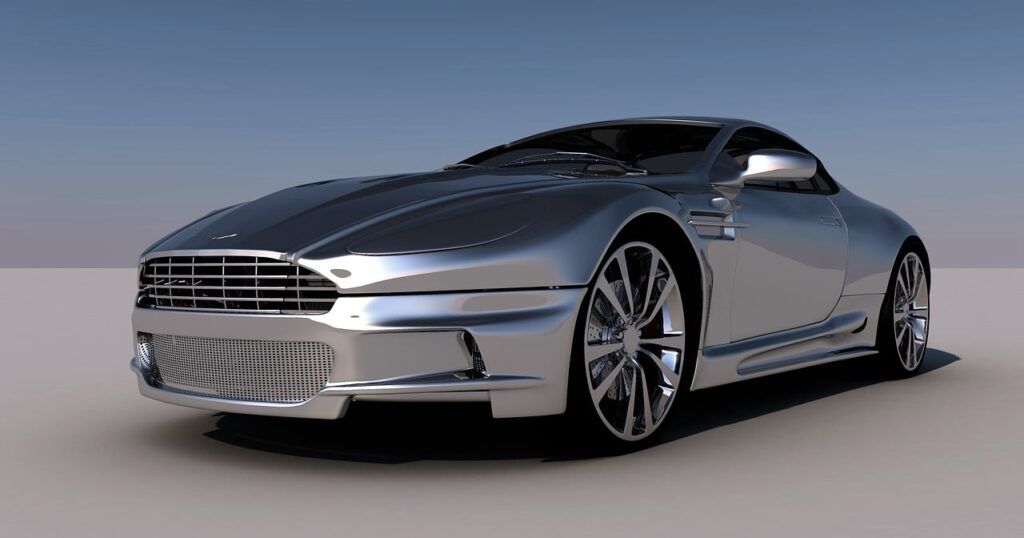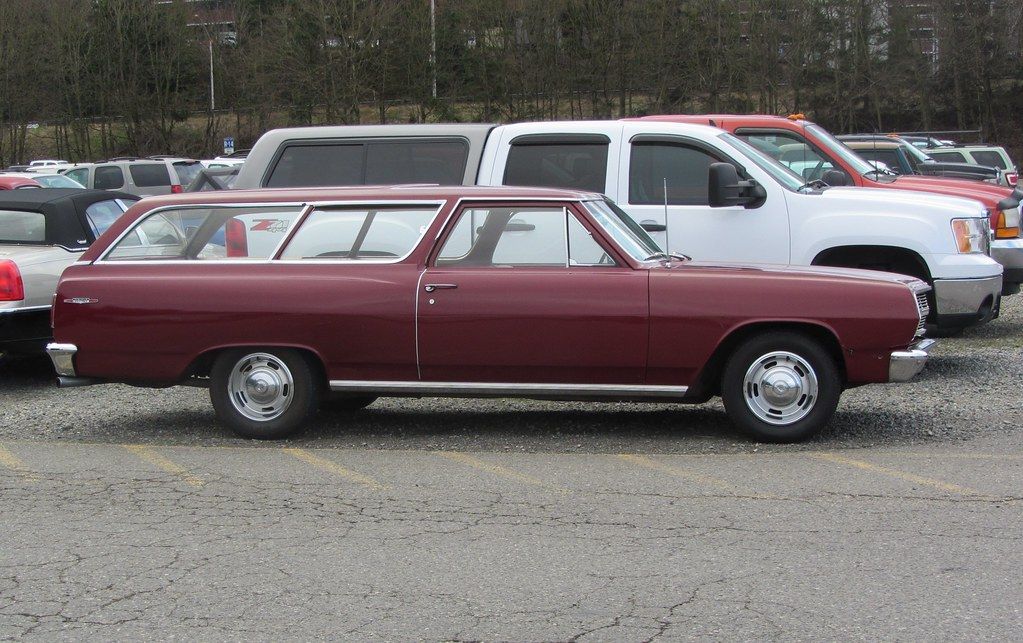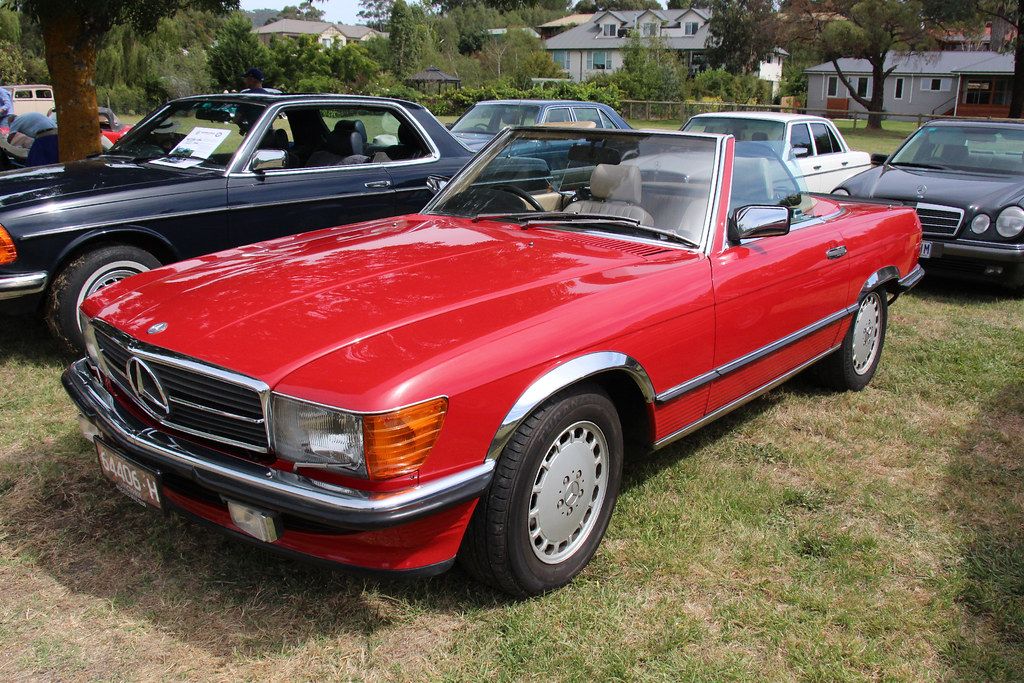
Mercedes-Benz has cultivated a rich and extensive history, spanning well over a century, in the development and manufacturing of some of the most sought-after and expensive automobiles across the globe. From its early establishment as a luxury automaker in the twentieth century, the brand has consistently forged a reputation synonymous with solid engineering and top-tier design. This enduring legacy makes the task of identifying the ‘best of the best’ within its vast portfolio a truly formidable challenge.
When contemplating what elevates a car to the status of ‘greatness,’ numerous factors come into play. Is it purely about raw speed, or does its unparalleled luxury define its excellence? Perhaps its widespread popularity or groundbreaking innovation is the key differentiator. All these pertinent questions must be thoroughly asked and answered to definitively determine which models stand as true icons in the automotive pantheon.
Concentrating exclusively on the magnificent models made available for purchase to the general public, and intentionally setting aside the company’s often-victorious race cars, commercial trucks, and other heavy equipment, we embark on an in-depth exploration. This article will shine a spotlight on 15 of the best Mercedes cars of all time, considering the myriad qualities that enthusiasts and drivers alike cherish in any automobile. Join us as we delve into the engineering marvels and design triumphs that have cemented Mercedes-Benz’s position at the pinnacle of automotive excellence.
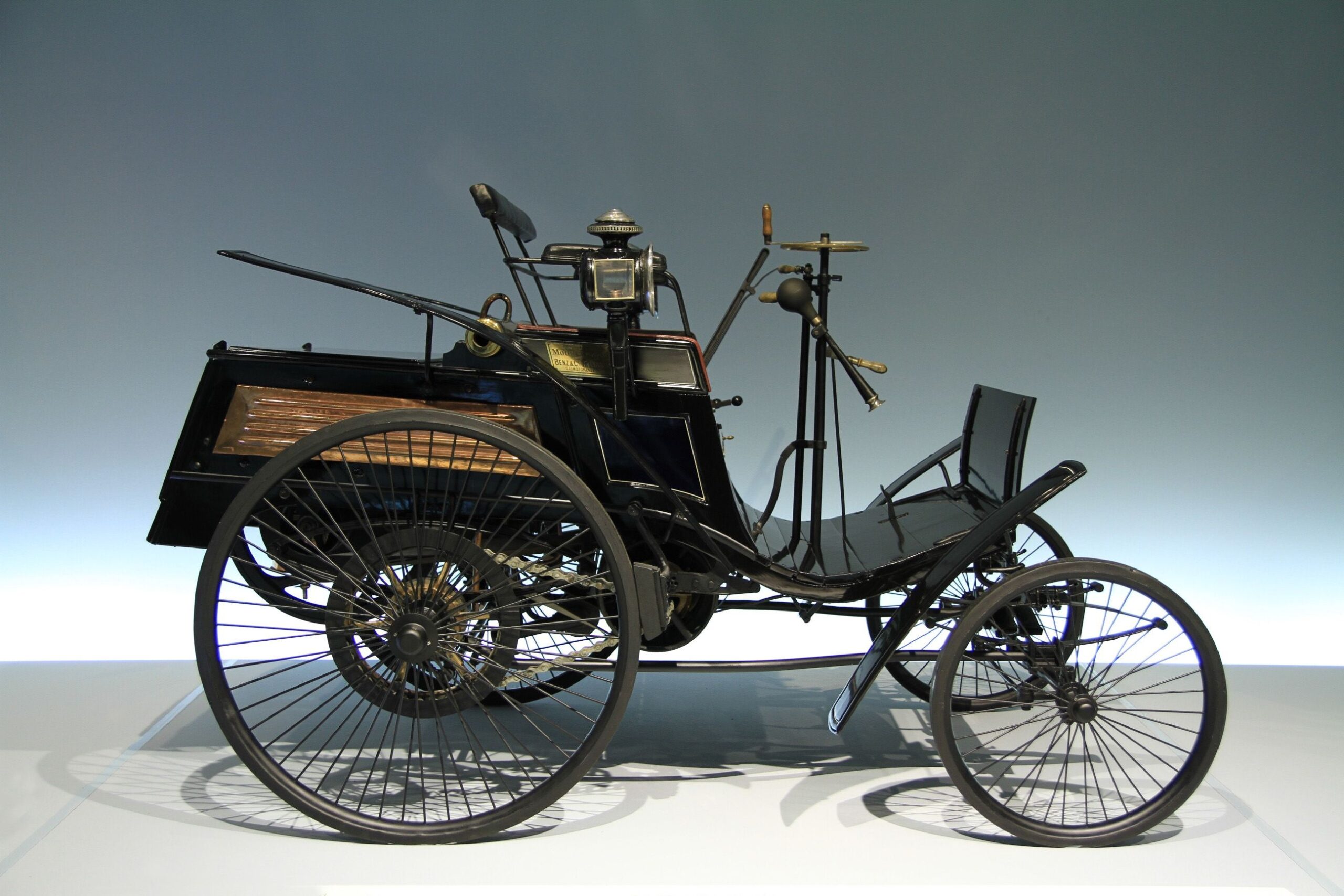
1. **Benz Patent-Motorwagen**No discourse concerning the greatest Mercedes-Benz vehicles could ever be considered complete without a foundational acknowledgment of the Benz Patent-Motorwagen. While it technically predates the Mercedes-Benz merger, it is unequivocally the progenitor, as without its existence, no Mercedes vehicle—and arguably no automobile as we know it—would have come into being. This revolutionary invention is globally acclaimed as the first working automobile, a testament underscored by its patent submission date of 1886.
Carl Benz meticulously developed and constructed the Motorwagen, designing its single-cylinder engine from the ground up to produce a modest but groundbreaking total power output of approximately ⅔ horsepower. This early self-propelled vehicle, though rudimentary by modern standards, demonstrated immense viability. Its true public debut, however, came through an extraordinary and clandestine journey undertaken by Carl’s wife, Bertha Benz.
Bertha, recognizing the crucial need for public exposure to attract potential buyers, embarked on the first-ever road trip with her teenage sons, covering a remarkable 66-mile journey from Heidelberg to Wiesloch. Remarkably, Carl remained entirely unaware of her audacious undertaking. With no gas stations in existence and a small fuel tank, Bertha resourcefully made stops at various pharmacies along her route to acquire additional supplies of gasoline, solidifying the car’s practical potential and securing its place in history, not for speed or luxury, but for simply being the first.
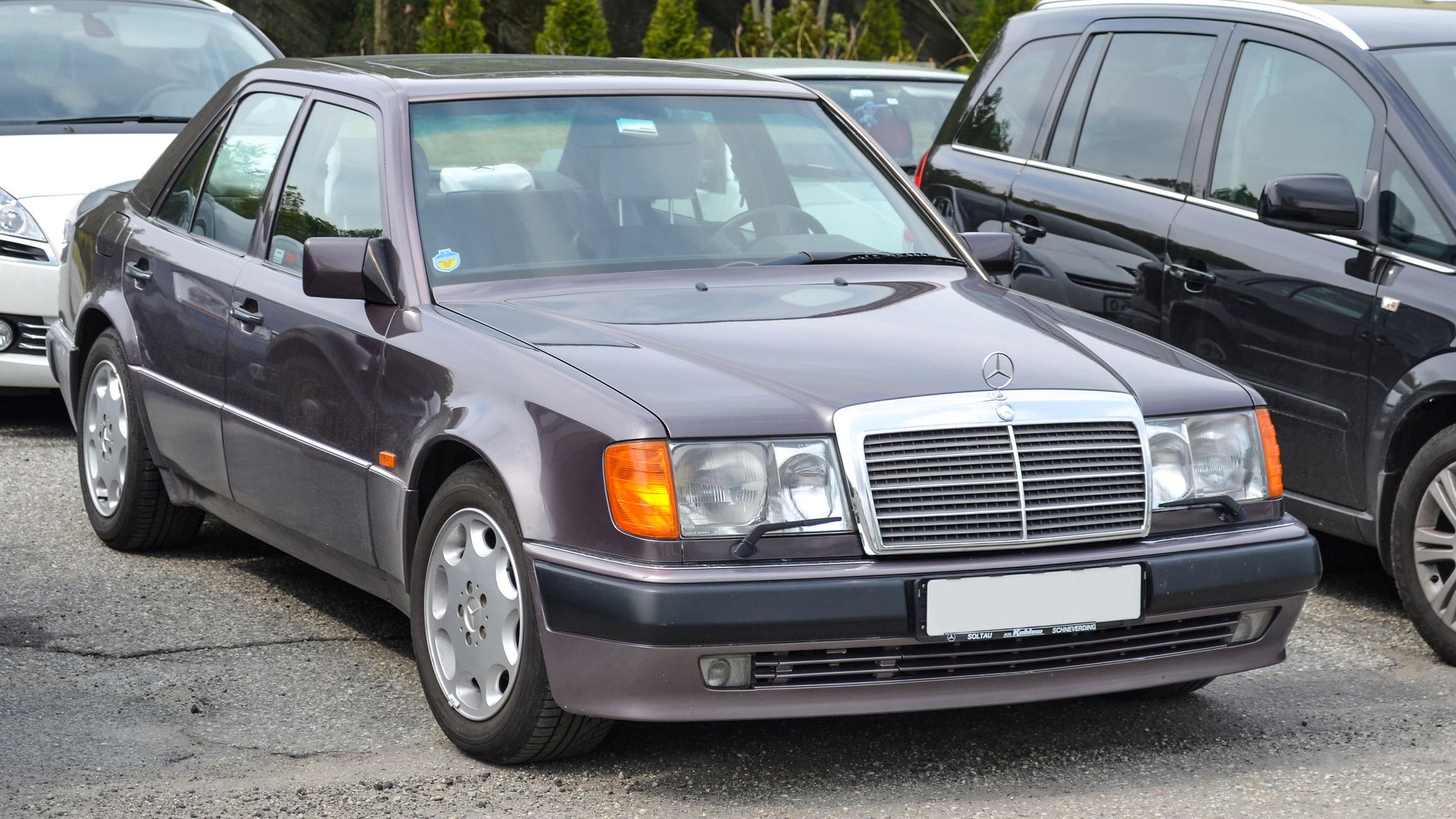
2. **Mercedes-Benz 500E**By the 1990s, Mercedes-Benz had firmly cemented its position as a preeminent leader in the realm of luxury vehicle manufacturing. While high-performance vehicles had not historically been their primary business focus, the company had consistently demonstrated an exceptional degree of skill in motorsports and advanced engineering, accumulating numerous victories on demanding racing circuits. This expertise, combined with an increasing public demand for refined luxury sedans that also offered substantial power and agility, prompted Mercedes to pursue a new engineering challenge.
To meet this burgeoning market desire, Mercedes embarked on a mission to engineer what they envisioned as the ultimate sports sedan. In a strategic move, Mercedes shrewdly looked to Porsche, leveraging their renowned expertise in delivering high-performance engineering for the road, and outsourced a significant portion of the car’s development. The resulting 500E masterfully utilized the existing W124 chassis, which already underpinned the highly popular 300E model, and integrated the robust Mercedes 5.0-liter V8 engine along with suspension components borrowed from the acclaimed 500SL.
Engineers at Porsche undertook extensive modifications, widening the body to meticulously accommodate the beefier suspension parts, upgrading the braking system, and expertly reworking the engine to generate a healthy 322 horsepower, as reported by Hagerty. Due to the wider body panels, the car could not fit into existing Mercedes-Benz assembly lines, a logistical challenge that Porsche proficiently managed by handling the majority of the manufacturing using exclusively Mercedes parts. The final product was an understated yet potent performance car, capable of accelerating from 0-60 mph in less than 6 seconds and maintaining exceptional grip through curves, all while retaining the unassuming facade of a family car suitable for the country club parking lot. It remains a highly sought-after collectible today, consistently delivering an exhilarating driving experience.
Read more about: Serving Up Style: Discover the Jaw-Dropping Cars in Novak Djokovic’s Extravagant Collection
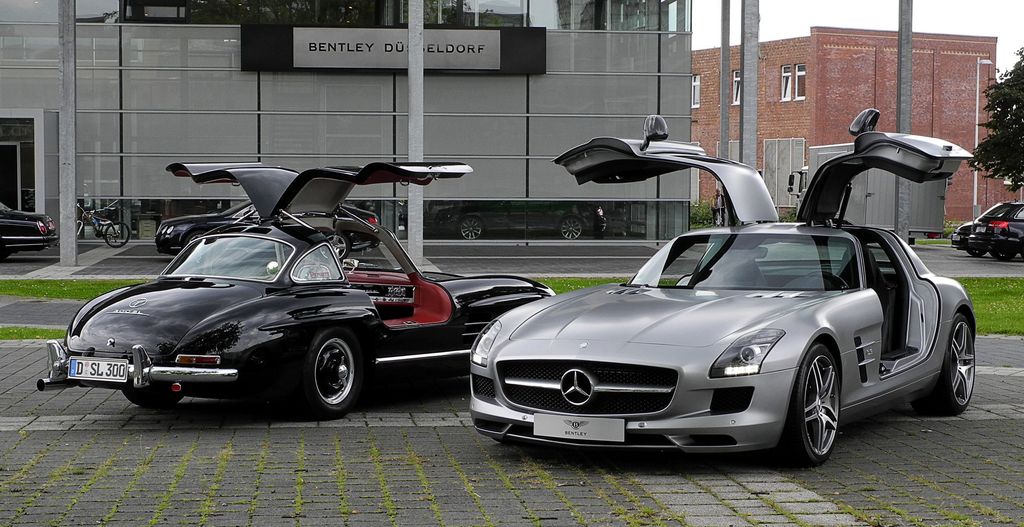
3. **Mercedes-Benz SLS AMG**As the second vehicle to be entirely developed by AMG, the Mercedes-Benz SLS AMG stands out as a more refined and road-focused automobile compared to its raw, preceding counterpart, the CLK GTR. It possesses immense power, yet it exhibits a surprising docility and composure. The potent 6.2-liter V8 engine channels an impressive 563 horsepower from front to back, a feat enabled by its meticulously engineered weight distribution. The strategic positioning of the engine up front but behind the wheels, coupled with the transaxle in the rear, contributes to a nearly perfect balance.
Mercedes-Benz itself emphasizes that every other component on the SLS is meticulously crafted with deliberate intention, focusing on qualities like lightness, stiffness, and ultimate usability. The result is a veritable “tame beast” – a vehicle capable of tearing down a racetrack with blistering speed, yet equally adept at cruising serenely along a scenic country road. However, the most immediately striking feature, and arguably the car’s signature element, is its iconic gullwing doors.
These dramatic doors, not seen on a production Benz since the 1950s, are a direct stylistic callback to the original 300SL, which remains an enduring icon of automotive history. In the case of the SLS, their purpose is primarily one of nostalgia and aesthetic appeal rather than strict function; there is no practical reason dictating their unique upward-opening design. These glorious wings serve one paramount purpose: they gracefully glide upward to imbue the driver with an undeniable sense of cool. This unparalleled coolness, however, comes at a significant financial cost. According to Car and Driver, the original price of the SLS exceeded $200,000 when new, and unlike many vehicles, its value tends to appreciate rather than depreciate. As a limited-run, super high-end Benz, collectors can reasonably expect its value to grow with age, making it arguably the ultimate Mercedes for those who prioritize making a stylish statement.
Car Model Information: 2024 Genesis GV70 2.5T AWD
Name: Mercedes-Benz SLS AMG
Manufacturer: Mercedes-AMG
Production: January 2010–2014
ModelYears: 2010–2015
Assembly: Sindelfingen
Designer: Mark Fetherston (2007)
Class: Sports car
BodyStyle: coupe
Layout: Front mid-engine, rear-wheel-drive layout,all-wheel drive
Engine: Mercedes-Benz M156 engine#M159,V8 engine
Transmission: dual-clutch,automatic transmission
Wheelbase: 2680 mm
Abbr: on
Length: 4638 mm
Width: 1939 mm
Height: 1252 mm
Weight: {{convert,1619,kg,lb,0,abbr=on
Predecessor: Mercedes-Benz SLR McLaren
Doors: Gull-wing door
Categories: All articles needing additional references, All articles with bare URLs for citations, Articles needing additional references from November 2018, Articles with bare URLs for citations from August 2022, Articles with hAudio microformats
Summary: The Mercedes-Benz SLS AMG (C197 / R197) is a front mid-engine, 2-seater, limited production sports car developed by the Mercedes-AMG division of German automotive manufacturer Mercedes-Benz, with the assistance of David Coulthard. The car is the successor to the Mercedes-Benz SLR McLaren. SLS stands for “Super Leicht Sport” (Super Light Sport).
The SLS was the first Mercedes-Benz automobile designed and built from scratch entirely by AMG. Upon its introduction at the 2009 Frankfurt Motor Show, the SLS AMG’s 420 kW; 563 hp (571 PS) M159 engine was according to AMG “the world’s most powerful naturally aspirated production series engine” ever produced.
An electric version of the car, the SLS AMG Electric Drive, was presented at the 2012 Paris Motor Show. Production ended in 2014 with the introduction of the SLS AMG GT Final Edition.
As compared to its predecessor (the SLR McLaren), the SLS is per Mercedes-AMG head Tobias Moers, the faster car on the track, both in the hands of normal drivers as well as race car drivers. The Mercedes-McLaren SLR came in at 1,750 kg (3,858 lb). The SLS, however, has a curb weight of 1,619 kg (3,569 lb) when equipped with the standard wheels.
Get more information about: Mercedes-Benz SLS AMG
Buying a high-performing used car >>>
Brand: Mercedes-Benz Model: SLS AMG
Price: $39,995 Mileage: 20,074 mi.
Read more about: Engine Roar and Grand Slam Glory: Dive Into Jannik Sinner’s Epic Car Collection!
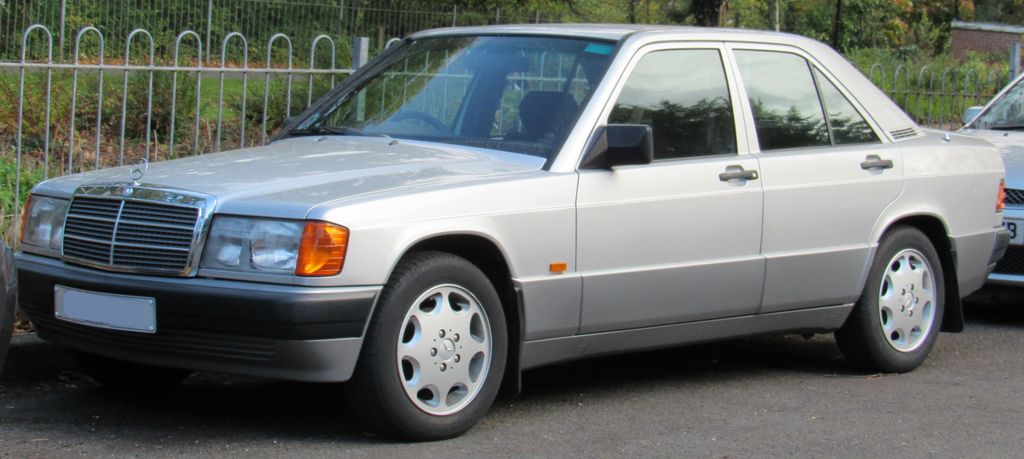
4. **Mercedes-Benz 190E**Defining a car as “the best” does not necessarily mandate it be the fastest, largest, or most opulent. Sometimes, true greatness lies in a vehicle’s ability to simply excel magnificently at its intended purpose, a characteristic perfectly embodied by the venerable Mercedes-Benz 190E. Chief designer Bruno Sacco introduced what would become the dominant design language for the entire company when he meticulously penned the 190. Adopting a now-familiar boxy appearance, characterized by an abundance of straight lines and sharp edges, the 190 propelled Mercedes-Benz in an entirely new aesthetic direction, one that was resoundingly well-received by the discerning buying public.
Beyond its fresh visual appeal, the 190 also signaled Mercedes-Benz’s ambitious endeavor to penetrate the small car market. Often affectionately dubbed the “Baby Benz,” the 190 was far more than just a styling exercise; it incorporated numerous technological breakthroughs, particularly in the critical domain of safety. The very construction of the car extensively utilized high-strength steel and a robust frame structure meticulously engineered to minimize the impact of a collision and provide enhanced protection for its occupants in the event of an accident.
Shortly following its initial introduction, a highly innovative diesel variant was offered, which Mercedes proudly marketed as “whisper diesel.” This moniker reflected the considerable efforts invested in making the diesel engine as quiet as humanly possible, a significant achievement for its time. The 190 proved to be an immensely popular choice for individuals preferring a more compactly packaged vehicle, and it served as an accessible entry-level luxury car into the Mercedes-Benz brand. It remained in continuous production for over a decade, with a remarkable total output of 1,879,629 units, according to The World of Mercedes-Benz AMG, solidifying its status as a foundational success.
Read more about: 17 Pro Methods to Unlock Your Car’s Full Horsepower
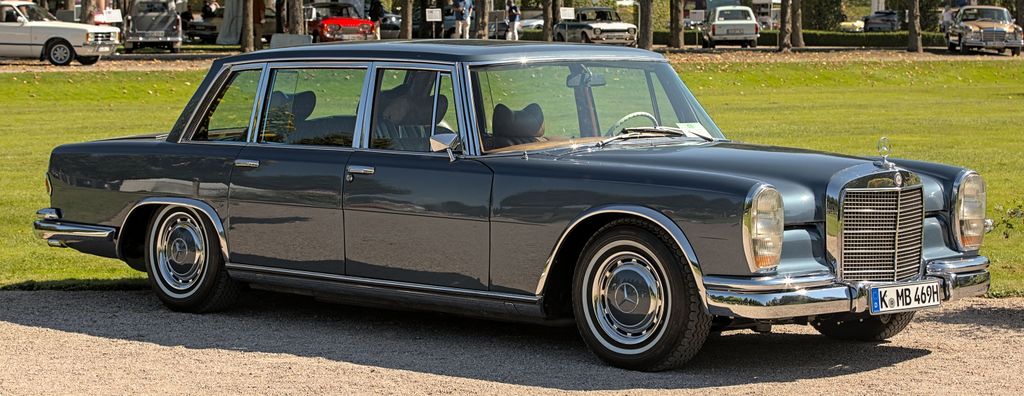
5. **Mercedes-Benz 600 Großer**For a select echelon of individuals possessing significant wealth, only the absolute finest automobile will suffice. While Mercedes-Benz is frequently the brand of choice for such discerning customers, there are rare occasions when even they must elevate their game to meet the demands of their most exacting clientele. To cater to the specific needs of the chauffeur-driven elite in the mid-1960s, Mercedes meticulously crafted the 600 Großer, a truly stretched limousine adorned with the most exquisite appointments available. Luxury of this unparalleled caliber consistently commands high demand among the world’s wealthiest.
This majestic vehicle boasts a fascinating list of prominent owners, including entertainers like Jeremy Clarkson, Elvis Presley, and Elton John. However, according to GQ, they share company with a less savory roster of figures such as Chairman Mao, Idi Amin, Saddam Hussein, and Kim Jong-un, creating quite a diverse cast of characters associated with this automotive titan. Political affiliations and moral standings aside, the car was engineered from its very inception to represent the absolute pinnacle of luxury and technological advancement for its era.
The 600 Großer is equipped with an incredibly complex hydraulic system, specifically designed to prepare the car for handling all manner of terrain while simultaneously maintaining a sublimely smooth driving experience for its occupants. This same powerful hydraulic system drives a multitude of features, including the power windows, which are robust enough to reportedly “take an arm off,” alongside a hydraulic power trunk lid, power seats, a sunroof, and even the doors themselves, as detailed by Motor Biscuit. Propulsion is provided by Mercedes’ first production V8 engine, a 6.3-liter powerhouse generating 250 horsepower. The extensive list of custom extras available for the 600 Großer was limited only by the client’s imagination and the technological boundaries of the time, making it clear why it was so immensely popular with heads of state and rock stars alike; it was, quite simply, the best.
Car Model Information: 2024 Genesis GV70 2.5T AWD
Name: Mercedes-Benz 600 (W100)
Manufacturer: Daimler-Benz
Assembly: Stuttgart
Class: Ultra-luxury car,Limousine
Production: 1963–1981,2,677 built,SWB: 2,190,LWB: 428,Landaulet: 59
BodyStyle: saloon (automobile),limousine,6-door limousine,Landaulet (car)
Engine: Mercedes-Benz M100 engine
Layout: FR layout
Aka: Grand Mercedes,Grosser Mercedes
Predecessor: Mercedes-Benz W150,Mercedes-Benz W189
Successor: Mercedes-Benz S-Class
Wheelbase: 3200 mm
Abbr: on
Length: 5580 mm
Width: 1950 mm
Height: 1500 mm
Weight: convert
Designer: Bruno Sacco,Friedrich Geiger,Paul Bracq
Categories: 1960s cars, 1970s cars, 1980s cars, All articles containing potentially dated statements, All articles needing additional references
Summary: The Mercedes-Benz 600 (factory code “W100”) is a single-generation line of full-size ultra-luxury limousines and Pullman limousines, made by Daimler-Benz from 1963 through 1981. Nicknamed Grosser (Grand/Large) Mercedes, succeeded the Type 300d “Adenauer” as the company’s flagship model. It was positioned well above the subsequent 300-series in price, amenities, and status. When launched in 1963, the Mercedes 600 was the most expensive car in the world. Its few competitors included British and American marques such as Rolls-Royce, Cadillac and Lincoln’s top model lines. The Mercedes 600 still remains to be a very expensive car to own and maintain even today.
The Mercedes-Benz 600 models are well known for their ownership among celebrities, political leaders and royalty throughout the late 20th century. Widely regarded by many automotive experts and enthusiasts as the greatest luxury vehicle ever made, the 600 was notable for its advanced hydraulic systems. Ownership of a Mercedes-Benz 600 remains costly due to the vehicle’s complexity and the high expense of parts and maintenance. Well-preserved examples and historically significant models can command prices of up to $3.5 million reflecting their rarity and prestige.
Generally, the short-wheelbase (SWB) models were designed to be owner-driven, whereas the long-wheelbase (LWB) and limousine models, often incorporating a central divider with power window, were intended for chauffeur operation.
“Living legend: the Mercedes-Benz 600 is nothing but grand. With its groundbreaking engineering, this iconic vehicle has been defining automotive luxury since its first appearance in 1963.” – Mercedes Benz
Get more information about: Mercedes-Benz 600
Buying a high-performing used car >>>
Brand: Mercedes-Benz Model: 600 Großer
Price: $39,995 Mileage: 20,074 mi.
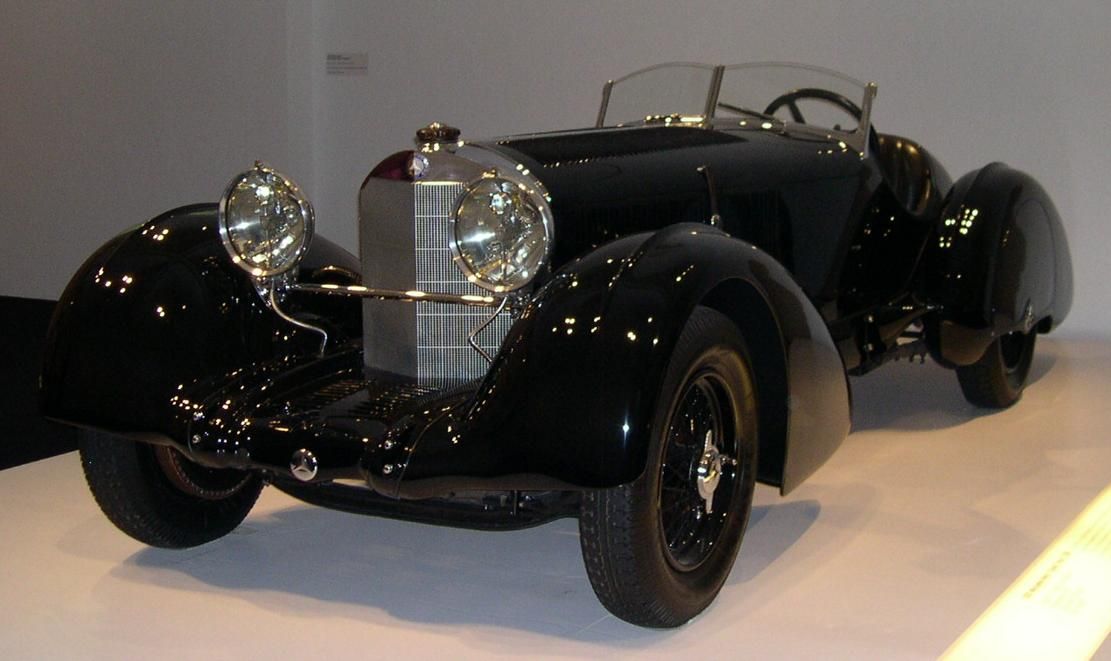
6. **Mercedes-Benz SSK**While Mercedes-Benz is most frequently discussed today in the context of the exquisite luxury automobiles they currently produce, it is vital to remember that this is a company with a rich history spanning well over a century. Many of its past creations are equally deserving of accolades and attention. Among these historically significant vehicles stands the SSK, a super sports car that arguably existed before anyone had even coined the term “super sports car.” Prior to Dr. Ferdinand Porsche undertaking his iconic work on the “peoples’ car” for arguably the most unsavory character of modern times, he designed a series of remarkable cars for Mercedes-Benz, according to the Revs Institute.
Among the most magnificent of those creations is the SSK, developed in the late 1920s. The pinnacle of this illustrious line of cars is the 1931 SSKL, a vehicle propelled by a supercharged 7-liter inline six-cylinder engine, notably equipped with a roots-type supercharger, as detailed by Mercedes-Benz. With this groundbreaking engine configuration, this car was capable of producing a staggering 300 horsepower in 1931. To put this into perspective, an ordinary car of that era typically mustered only around 30 horsepower, rendering the SSK truly extraordinary in its performance capabilities.
Porsche’s design for the SSK was not only immensely powerful but also remarkably aesthetically pleasing, a harmonious blend of form and function. As Mercedes recounts, the SSK performed exceptionally well on the track, bringing its drivers numerous victories and establishing its racing prowess. This early success served as a powerful testament to how truly great a Mercedes-Benz car could be, showcasing the brand’s innate capacity for engineering high-performance, beautiful machines right from its nascent stages.
Read more about: Unearthing Automotive Legends: 6 of the Rarest German Cars, a Heritage of Craftsmanship and Allure
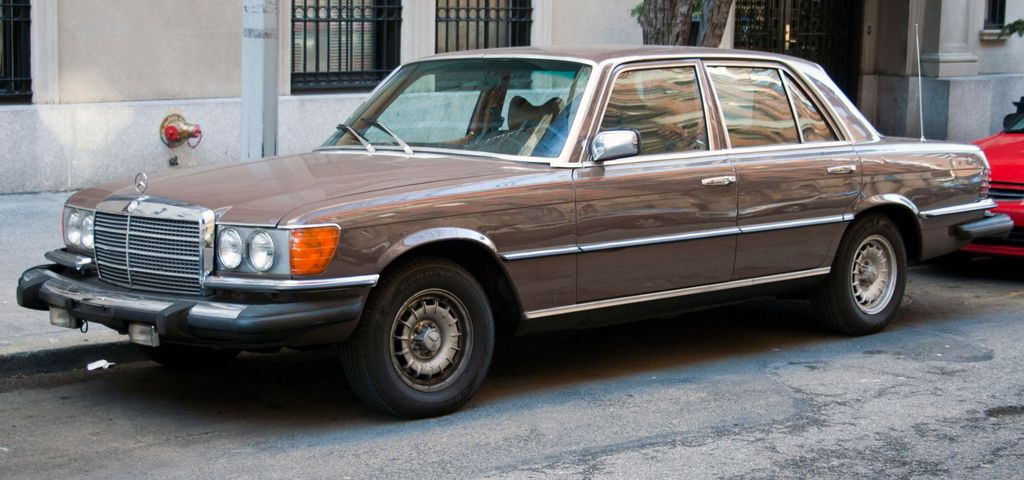
7. **Mercedes-Benz 300SD**Mercedes-Benz has consistently positioned itself as a trailblazing company within the automotive world, holding patents for dozens of novel technologies that have reshaped the industry. As a result, many of its cars have set significant precedents that other manufacturers would later emulate in their own products. While Mercedes boasted a long-standing history of producing diesel cars, stretching back to the 1930s, the introduction of the 1978 300SD marked a pivotal moment: it was the first time an automaker had offered a turbocharged diesel engine in a production car, a fact confirmed by AutoWeek.
Diesel cars produced prior to this innovation were most often characterized by their defining, and often frustrating, feature: their extreme sluggishness. They were, for all intents and purposes, abysmally slow. However, the revolutionary inclusion of the turbocharger meant that the new engine in the 300SD generated sufficient power for the car to achieve reasonable, or at least acceptable, performance, a notable improvement acknowledged by MotorTrend. The 5-cylinder turbodiesel engine produced approximately 120 horsepower, a figure that sounds quite low by today’s demanding standards but was remarkably respectable for the late 1970s, an era when many sports cars still struggled to reach 200 horsepower.
Beyond its innovative powertrain, the 300SD was otherwise typical of Mercedes cars of its time, renowned for possessing legendary reliability and an exceptionally strong, high level of build quality. This superior construction means that well-kept examples of these cars are famously known for accruing hundreds of thousands of miles on their odometers while still running robustly. For instance, a 1980 300SD discovered in a junkyard by AutoBlog had already clocked over 300,000 miles before its retirement, and that figure is likely on the conservative side. The 300SD is still celebrated today for its unwavering durability, often regarded as the car that will endure beyond us all.

8. **Mercedes-Benz 500K Special Roadster**Classic and antique Mercedes vehicles frequently embody sheer beauty, and the 500K Special Roadster stands as an exemplary testament to this tradition. Mercedes-Benz itself described the 500K as a “dream car,” a testament to its status as a meticulously hand-crafted masterpiece of automotive luxury. The creation of each 500K was a painstaking process, taking approximately five months to complete, with a cost equivalent to a luxury villa in Berlin at the time. Mercedes-Benz produced a mere 30 examples of these special cars, each lavished with the finest craftsmanship imaginable.
The interior exuded opulence, with dashboard gauges elegantly surrounded by exquisite artificial mother-of-pearl, while seats were sumptuously upholstered in fine leather. Beyond stunning aesthetics, technology played a significant role. As detailed by Forbes, propulsion came from an inline eight-cylinder engine, further enhanced by a supercharger, collectively producing a formidable 160 horsepower. This power allowed the 500K to achieve speeds of 100 mph, positioning it among the fastest cars in the post-Depression era.
The 500K also incorporated other cutting-edge features, including hydraulic brakes, a 12-volt electrical system, and electric power locks. With such an exclusive, hand-built vehicle, custom bodywork was a given, catering to clientele who sought unique treatment. Given its extreme rarity and historical significance, the few occasions these 500K Special Roadsters appear at auction see bids soar well over $2 million, solidifying its place as a truly great and enduring collector’s gem.
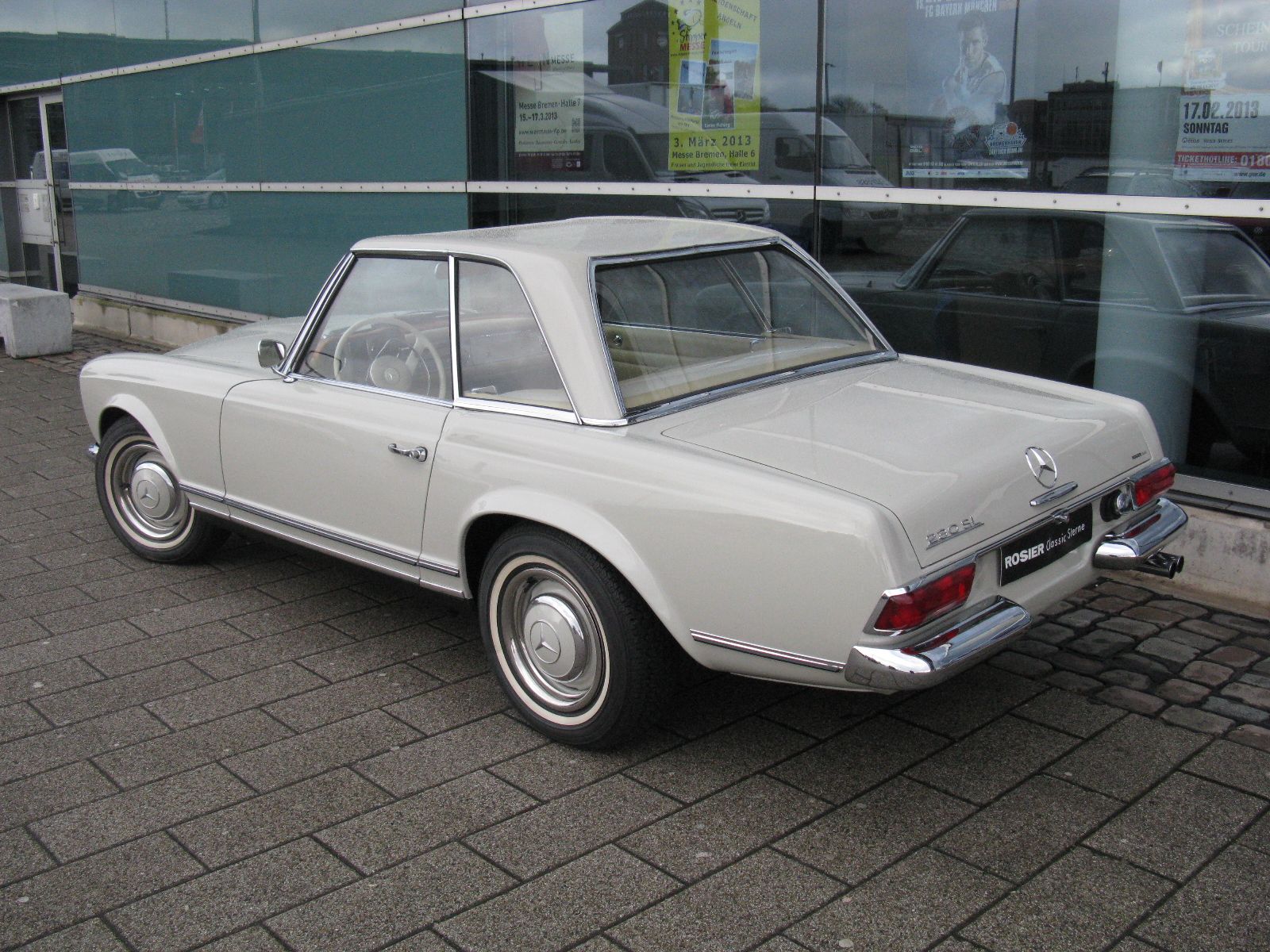
9. **Mercedes-Benz 230SL Pagoda**Selecting the single most beautiful Mercedes-Benz model ever created would be a challenging endeavor, yet the 230SL, produced from 1963 to 1971, presents a compelling case. This elegant roadster emerged as the successor to the dramatically curved 300SL coupe and 190SL roadster of the 1950s, consciously moving towards a more reserved, yet equally striking, design aesthetic. While the affectionate “Pagoda” moniker remains unofficial, its widespread use has practically cemented it, derived from the distinctive resemblance of its removable hardtop to the gracefully upward-curving rooflines of a Japanese pagoda.
The specifications for the 230SL, as reported by UltimateSPECS, reveal significant engineering upgrades. The new model saw an increase in cylinder count to six and a displacement bump from 1.9 liters to 2.3 liters. Importantly, the 230SL inherited the same sophisticated mechanical fuel injection system from the 300SL. This advanced powertrain delivered a healthy 150 horsepower, a figure more than adequate to propel a car of its size with impressive agility and performance for its era.
To enhance structural rigidity, body panels were spot welded directly to the frame, rather than simply bolted on. While this technique effectively contributed to reducing flex through corners, Driving cautions that it could lead to costly repairs. Initially selling for around $7,000 in 1963, the 230SL was accessible only to a select group. Today, while well-maintained examples may not consistently break records, MotorAuthority confirms they still frequently command prices well exceeding $50,000, underscoring their enduring desirability and classic status.
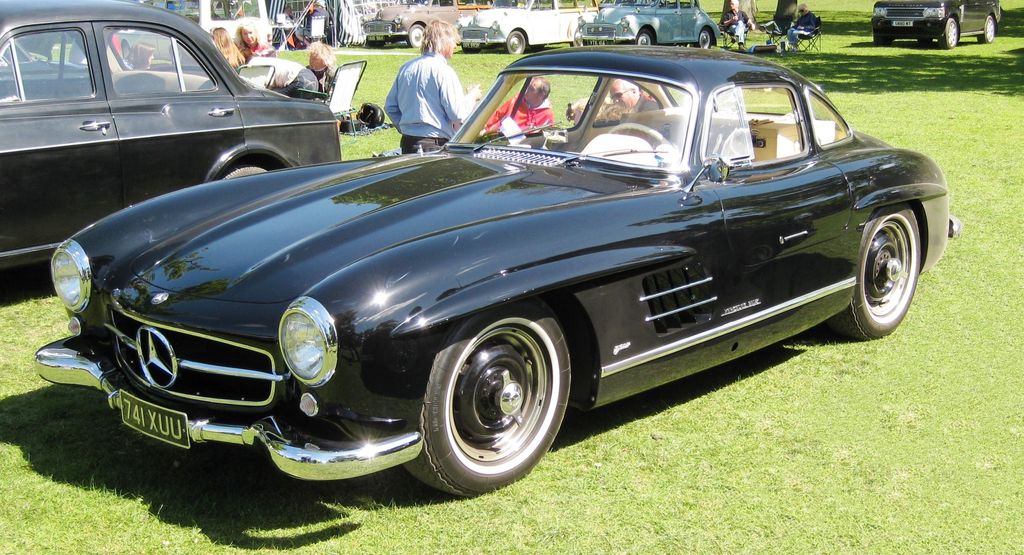
10. **Mercedes-Benz 300SL**Among the pantheon of iconic automobiles, the Mercedes-Benz 300SL reigns supreme as an undisputed legend, instantly recognizable for its dramatic sculpted curves and signature gullwing doors. The genesis of this remarkable vehicle lies firmly on the racetrack, proudly holding the distinction of being the first race car developed by Mercedes-Benz in the post-war era. Its distinctive gullwing doors, while undeniably iconic, were not merely a stylistic flourish but rather a brilliant solution born out of engineering necessity.
According to Mercedes, the innovative tube frame construction was meticulously designed to achieve maximum torsional rigidity while simultaneously keeping its weight down to a remarkably light 50 kilograms (approximately 110 pounds). However, the unique shape of this frame presented a challenge: traditional cutouts for conventional doors were simply not feasible. This engineering constraint precisely created the need for an inventive solution, leading directly to the ingenious upward-opening gullwing doors that became its most enduring characteristic.
While its stunning appearance alone would render the 300SL a highly desirable vehicle, its deep-rooted racing heritage ensured performance was equally vital in cementing its status as a truly great car. Mercedes-Benz already possessed an excellent inline six-cylinder engine, further enhanced and tuned with the groundbreaking use of mechanical direct fuel injection to produce an impressive 220 horsepower. This potent combination was more than sufficient to make such a lightweight car exceptionally fast for its time. Furthermore, it held another significant pioneering achievement: it was the first production car ever sold with a fuel-injected engine. Today, the 300SL continues to be one of the most coveted cars on the planet, its breathtaking beauty and aged opulence making it one of the very best Mercedes vehicles, with Robb Report affirming that existing models can fetch millions when they appear at auction.
Read more about: Classic Cars Worth a Fortune: See the Models Skyrocketed in Value
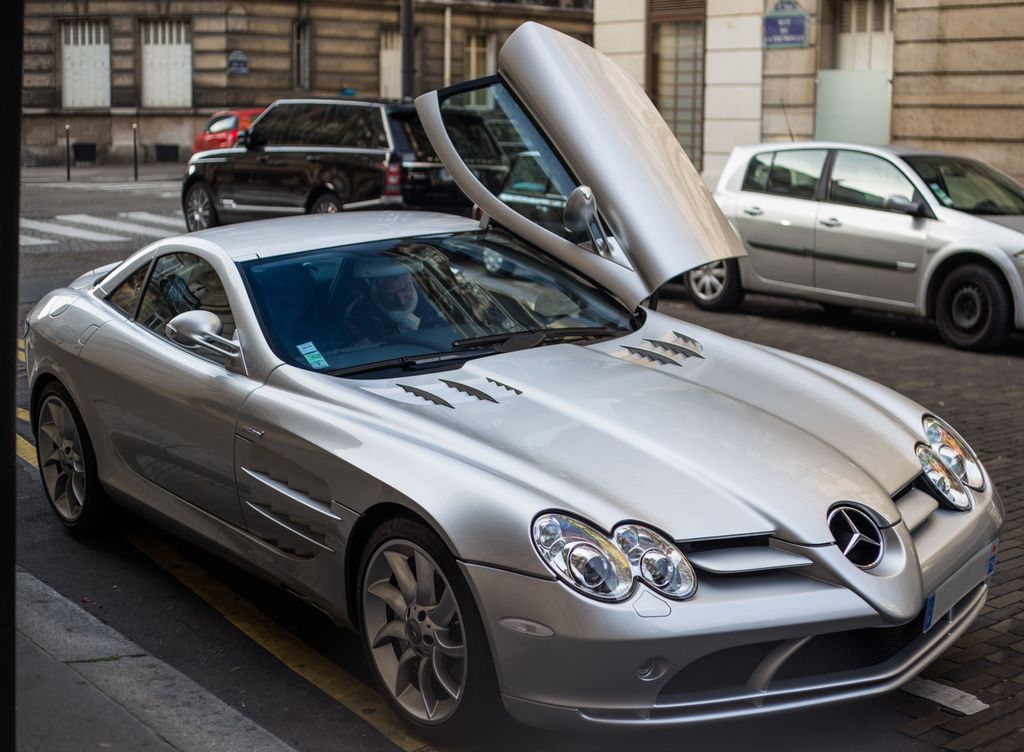
11. **Mercedes-Benz SLR McLaren**In the complex world of automotive development, strategic collaborations can often result in truly special vehicles that individual automakers might not conceive alone. The partnership between legacy companies and smaller, specialized boutique manufacturers, where the larger entity holds a vested interest—much like General Motors and Lotus—has historically produced a fascinating array of interesting projects. When Mercedes-Benz held a significant stake in the highly successful racing team and engineering firm McLaren, their combined expertise culminated in an exceptionally unique project: the SLR McLaren.
Named as a direct homage to the legendary SLR racing cars of the 1950s, this modern marvel masterfully blended the hallmark luxury of Mercedes with the unparalleled engineering prowess of McLaren. As detailed by Car and Driver, the SLR McLaren was powered by a supercharged V8 engine, meticulously hand-built at the McLaren facility in Woking, England, and capable of generating a healthy 617 horsepower. Motor Trend independently timed its acceleration from 0 to 60 mph at a blistering 3.6 seconds, firmly establishing it as a properly quick machine, especially considering its front-engine, rear-drive configuration.
What truly set the SLR McLaren apart, beyond its raw speed, was its remarkable dual nature. Testers from Motor Trend lauded its extraordinary ability to attack a racetrack with blistering speed, yet simultaneously maintain an exceptional level of refinement and comfort for everyday road driving. Unlike many supercars, often characterized by unyieldingly firm rides, the SLR McLaren offered a sophisticated, comfortable, and highly refined experience. It effortlessly hit desired mile markers with astonishing velocity, yet arrived at the country club without breaking a sweat, presenting itself as a nearly perfect car for the discerning enthusiast of considerable means. With recent auction prices fluctuating between a quarter and half-million dollars, as evidenced by listings like Stratas’, the financial wherewithal of its potential owners must remain substantial.
Car Model Information: 2024 Genesis GV70 2.5T AWD
Sp: uk
Name: Mercedes-Benz SLR McLaren
Manufacturer: DaimlerChrysler,Daimler AG,McLaren Automotive
Production: 2003–2010,2,157 produced
Assembly: Surrey,Woking,England
Designer: Gordon Murray,Gorden Wagener
Class: Grand tourer
BodyStyle: coupé
Layout: Front mid-engine, rear-wheel-drive layout
Engine: 5439 cc
Abbr: cite web
Order: supercharged,Mercedes-Benz M113 engine#M155,V8 engine
Powerout: 626 PS
Transmission: 5G-Tronic,automatic transmission
Wheelbase: 2700 mm
Length: 4656 mm
Width: 1909 mm
Height: 1261 mm
Weight: convert,1791.5 kg
Predecessor: Mercedes-Benz 300 SLR
Successor: Mercedes-Benz SLS AMG
Doors: Butterfly doors
ModelYears: 2004–2010
Categories: All articles needing additional references, All articles with dead external links, Articles needing additional references from November 2018, Articles with dead external links from January 2018, Articles with permanently dead external links
Summary: The Mercedes-Benz SLR McLaren (C199 / R199 / Z199) is a grand tourer jointly developed by German automotive manufacturer Mercedes-Benz and British automobile manufacturer McLaren Automotive and sold from 2003 to 2010. When the car was developed, Mercedes-Benz owned 40 percent of the McLaren Group and the car was produced in conjunction between the two companies. The “SLR” name is an abbreviation for “Sport Leicht Rennsport” (Sport Light Racing), and was a homage to the Mercedes-Benz 300 SLR which served as the car’s inspiration. The car was offered in coupé, roadster and speedster bodystyles, with the latter being a limited edition model.
Get more information about: Mercedes-Benz SLR McLaren
Buying a high-performing used car >>>
Brand: Mercedes-Benz Model: SLR McLaren
Price: $39,995 Mileage: 20,074 mi.
Read more about: Engine Roar and Grand Slam Glory: Dive Into Jannik Sinner’s Epic Car Collection!
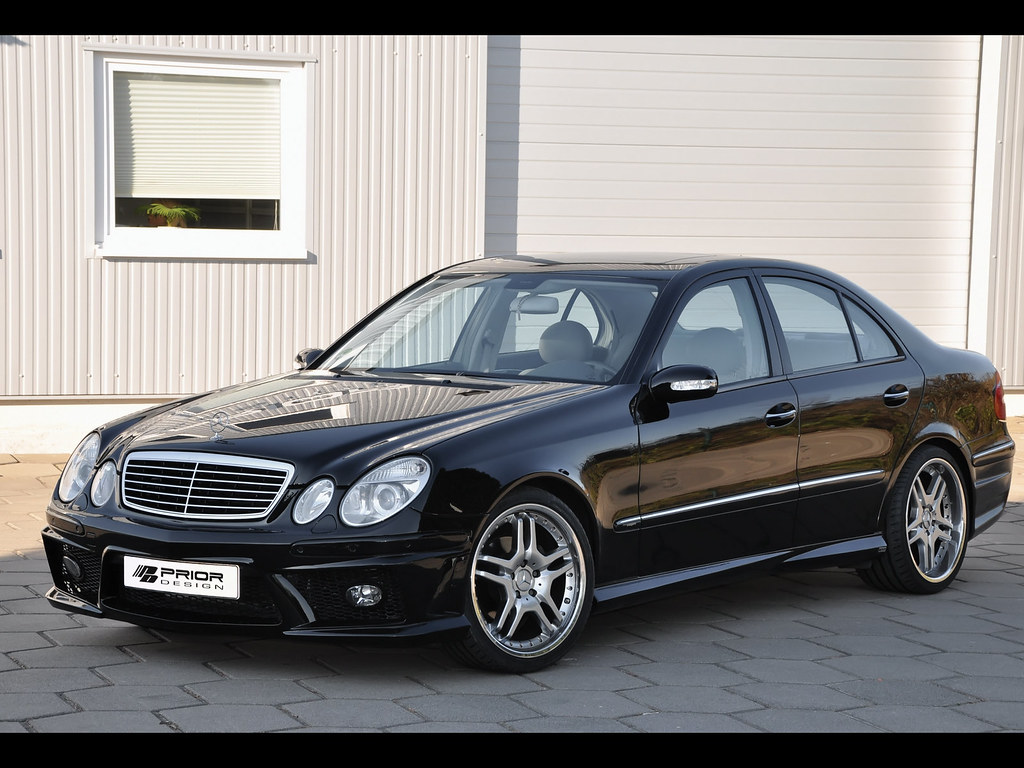
12. **Mercedes-Benz E63 AMG**While dreaming about wildly expensive supercars and iconic classics can provide immense enjoyment, the opportunity to actually drive such vehicles often remains elusive. For individuals who have achieved even modest success and aspire to indulge their motoring passion, there exists a more attainable, yet no less exhilarating, option. The Mercedes-Benz E63 AMG perfectly embodies this sweet spot, serving as an upper-middle-class tedium slayer, effortlessly combining everyday practicality with astonishing performance.
Beneath its luxurious facade lies a powertrain of formidable impressiveness. With specifications such as a twin-turbocharged DOHC 32-valve V-8 engine featuring an aluminum block and heads, direct fuel injection, and the sophisticated 4MATIC all-wheel-drive system, as detailed by Car and Driver, the E63 is nothing short of a suburban subdivision rocket. Delivering a staggering 603 horsepower, this machine is available in both sedan and wagon body styles, making it a grocery-getter the entire family can not only appreciate but actively love for its thrilling capabilities.
Equipped with all the luxury appointments and refinements expected of a modern high-end sedan, the E63 AMG executes every task with undeniable style and composure. Its blend of blistering speed, practical versatility, and sumptuous comfort firmly positions it as arguably the best family car for any household that cherishes going fast. It demonstrates that uncompromising performance doesn’t have to sacrifice usability, making it a standout “modern marvel” in the Mercedes-Benz lineup, bridging the gap between an executive saloon and a genuine sports car.
Car Model Information: 2024 Genesis GV70 2.5T AWD
Name: Mercedes-Benz E63 AMG
Caption: Maro Engel
Category: Supercars Championship
Constructor: Erebus Motorsport
Team: Erebus Motorsport,James Rosenberg Racing
Drivers: flagicon,Maro Engel,flagicon,Will Davison,flagicon,Dean Canto,flagicon,Craig Baird,flagicon,Andrew Thompson (racing driver),flagicon,Jack Le Brocq
FrontSuspension: Double-wishbone
RearSuspension: as front
Length: 4900 mm
Abbr: on
Width: 1800 mm
Height: 1200 mm
Wheelbase: 2822 mm
EngineName: Mercedes-Benz M156 engine#M159
Capacity: 5.0 L
Configuration: V8 engine
EnginePosition: Front-engine, rear-wheel-drive layout
GearboxName: transaxle
Gears: 6 forward speeds + 1 reverse
TransmissionType: Sequential manual transmission
Power: 458 kW
Weight: 1250 kg
Fuel: E85
Lubricants: Fuchs SE,Repsol,Penrite
Brakes: AP Racing
Tyres: Dunlop Tyres
Debut: 2013 Adelaide 500
FirstWin: 2014 Winton 400
LastWin: 2015 Ubet Perth Super Sprint
LastEvent: 2015 Sydney 500
Entries: 42
Races: 110
Wins: 2
Podiums: 3
Poles: 1
FastestLaps: 3
Titles: 0
Categories: All Wikipedia articles written in Australian English, Articles with short description, Cars introduced in 2013, Commons category link is locally defined, Mercedes-Benz racing cars
Summary: The Mercedes-Benz E63 AMG was a silhouette touring car built to compete in the V8 Supercars championship. Based on the Mercedes-AMG E63 W212 road car, the vehicle – designed and assembled by Erebus Motorsport – was constructed to the “Car of the Future” V8 Supercars regulations introduced in 2013, with the car used across the 2013, 2014, and 2015 seasons of Australian touring car racing.
Get more information about: Mercedes-Benz E63 AMG (V8 Supercar)
Buying a high-performing used car >>>
Brand: Mercedes-Benz Model: E63 AMG
Price: $39,995 Mileage: 20,074 mi.
Read more about: Mercedes-AMG CLE63 May Bring Back V-8, Ditching Hybrid After C63/GLC63 Sales Disappoint
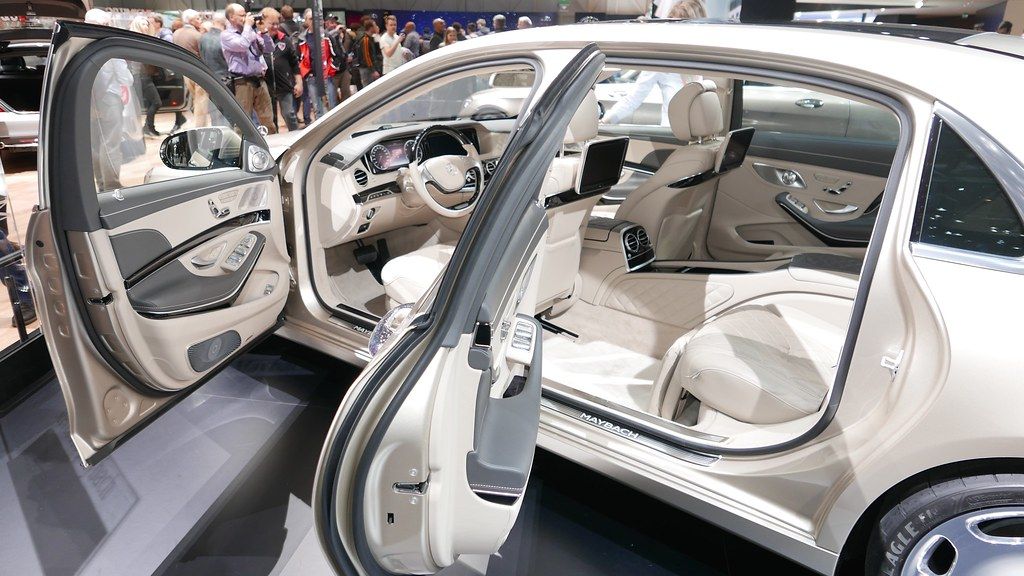
13. **Mercedes-Maybach S-Class**Many might confidently assert that the Mercedes-Benz S-Class represents the pinnacle of luxury on four wheels. However, they would be mistaken if they failed to acknowledge the absolute top-of-the-line variant: the Mercedes-Maybach S-Class. This extraordinary automobile is specifically designed as the luxury car for the echelon of individuals who truly sign the checks that rich people cash, representing an unparalleled statement of automotive opulence and exclusivity.
Priced around $200,000, the Maybach S-Class offers a multitude of exceptional attributes, but its most defining characteristic is an unwavering attention to minute detail. Beyond featuring power-operated functions for virtually everything imaginable, an abundance of exquisite small touches permeates the cabin. Passengers, both front and rear, are cradled in lavish, fluffy leather-tufted seats, meticulously wrapped in soft leather, with matching neck pillows thoughtfully provided for those in the back. Rear occupants benefit from dedicated screens displaying a wealth of information and providing intuitive controls for music, navigation, climate, and overall personal comfort. It is, quite simply, a car where a passenger will want for nothing, perhaps only wishing for a slightly longer journey to fully savor the ride.
Per Mercedes-Benz’s own technical descriptions, the vehicle boasts a twin-turbo 500 horsepower V8 engine complemented by a mild hybrid drive system, channeling power through a sophisticated 9-speed automatic transmission to the 4MATIC all-wheel-drive system. The extensive list of features continues with adjustable LED lighting throughout the cabin, multiple touchscreens with haptic feedback, neck heating for rear seats, rapid-heating rear seats, an incredibly complex and fully adjustable climate control system, soft-close doors, and so much more. This car is laden with every conceivable luxury; if that criterion defines automotive greatness for you, then the Mercedes-Maybach S-Class unequivocally stands as the best.
Read more about: Maybach: The Rare Luxury Gem and Its Incredible Comeback Story
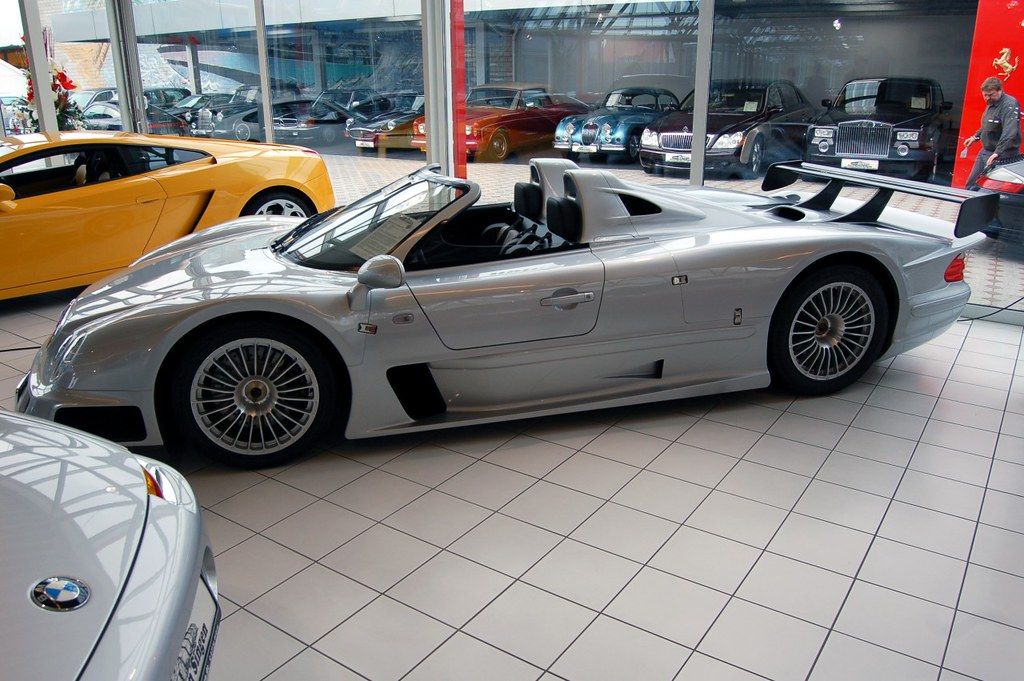
14. **Mercedes-Benz CLK GTR AMG**With its deep-seated expertise in building race-ready engines, AMG naturally evolved into the in-house tuner for diverse racing projects for its parent company, even before formally integrating with Mercedes-Benz. Among these ambitious undertakings emerged a formidable race-winning champion that a fortunate few could call their own: the CLK GTR. Conceived primarily for the FIA GT Championship, the CLK GTR was, first and foremost, a purebred race car, with its road-going iteration a secondary consideration.
The specifications for this automotive beast, as outlined by AutoEvolution, are as impressive as one would anticipate for a vehicle born from motorsport. It features a mid-mounted 6.9-liter naturally aspirated V12 engine, capable of pumping out more than 600 horsepower. While such power figures might be relatively common today, in 1997, this represented a truly staggering amount of raw power. To perfectly complement this immense output, every component was meticulously engineered for speed, utilizing aluminum and advanced composite materials extensively to forge a body and chassis as light and rigid as humanly possible.
Creature comforts, as expected from a dedicated race car, were virtually non-existent; the interior was notoriously cramped and devoid of amenities. But what it lacked in comfort, it more than compensated for in sheer, unadulterated speed. Its rarity further amplifies its allure and cost; only 25 examples of the road-going CLK GTR were ever manufactured. Consequently, when these automotive icons surface at auctions—such as listings with Sotheby’s—bids routinely drift into the multi-million dollar range. If the definitive measure of an automaker’s best car is solely by uncompromising speed and racing pedigree, then the CLK GTR AMG stands unsurpassed, a true untamed beast and a pinnacle of Mercedes-Benz engineering.
Car Model Information: 2024 Genesis GV70 2.5T AWD
Name: Mercedes-Benz CLK GTR
Caption: Goodwood Festival of Speed
Category: Group GT1
Constructor: Mercedes-Benz
Designer: Gerhard Ungar
Team: Mercedes-AMG,Persson Motorsport
Drivers: Collapsible list
Title: List of drivers
Chassis: Carbon fibre
Suspension: Double wishbone suspension
Wheelbase: cvt
Length: cvt
Width: cvt
Height: cvt
Weight: cvt
Track: cvt
EngineName: Mercedes-Benz,Mercedes-Benz M120 engine#Larger displacement M120s
Capacity: 5987 cc
Abbr: on
Configuration: V12 engine
EnginePosition: Mid-engine design
Gears: 6-speed
Type: Sequential manual transmission
Clutch: Four-plate carbon fibre
Brakes: Carbon-composite
Fuel: Mobil
Lubricants: Mobil 1
Tyres: Bridgestone
Successor: Mercedes-Benz CLK LM
Debut: 1997 FIA GT Hockenheim 4 Hours
FirstWin: 1997 Suzuka 1000 km
LastWin: 1998 FIA GT Silverstone 500 km
LastEvent: 1998 FIA GT Laguna Seca 500 km
Races: 13
Wins: 8
Poles: 8
FastestLaps: 7
TeamsChamp: 1997 FIA GT Championship season,1998 FIA GT Championship season
DriversChamp: 1997 FIA GT Championship season,1998 FIA GT Championship season
Categories: Articles with short description, CS1 Chinese-language sources (zh), CS1 Dutch-language sources (nl), CS1 German-language sources (de), Cars introduced in 1997
Summary: The Mercedes-Benz CLK GTR (chassis code C297) is a GT1 sports car built and produced by Mercedes-Benz in conjunction with their then motorsport partner AMG. Intended for racing in the new FIA GT Championship series in 1997, the CLK GTR was designed primarily as a race car. As such, the production of road cars necessary in order to meet homologation standards of GT1 was a secondary consideration in the car’s design, i.e. the CLK GTR was a homologation special.
After its successful campaign in the 1997 FIA GT Championship, the car was also entered in the first two rounds of the 1998 FIA GT Championship and won both of these rounds before being replaced for the 1998 24 Hours of Le Mans. Its successor, the 1998 Mercedes-Benz CLK LM, concluded Mercedes’ GT1 program. For 1999, Mercedes introduced the Mercedes-Benz CLR, a sports car built to the Le Mans Grand Touring Prototype (LMGTP) regulations. This sports car was a purpose-built racecar that did not have to abide by the homologation rules of the previous GT1 cars.
Get more information about: Mercedes-Benz CLK GTR
Buying a high-performing used car >>>
Brand: Mercedes-Benz Model: CLK GTR
Price: $39,995 Mileage: 20,074 mi.
Read more about: 18 Cars That Might Make People Think You’re a Jerk
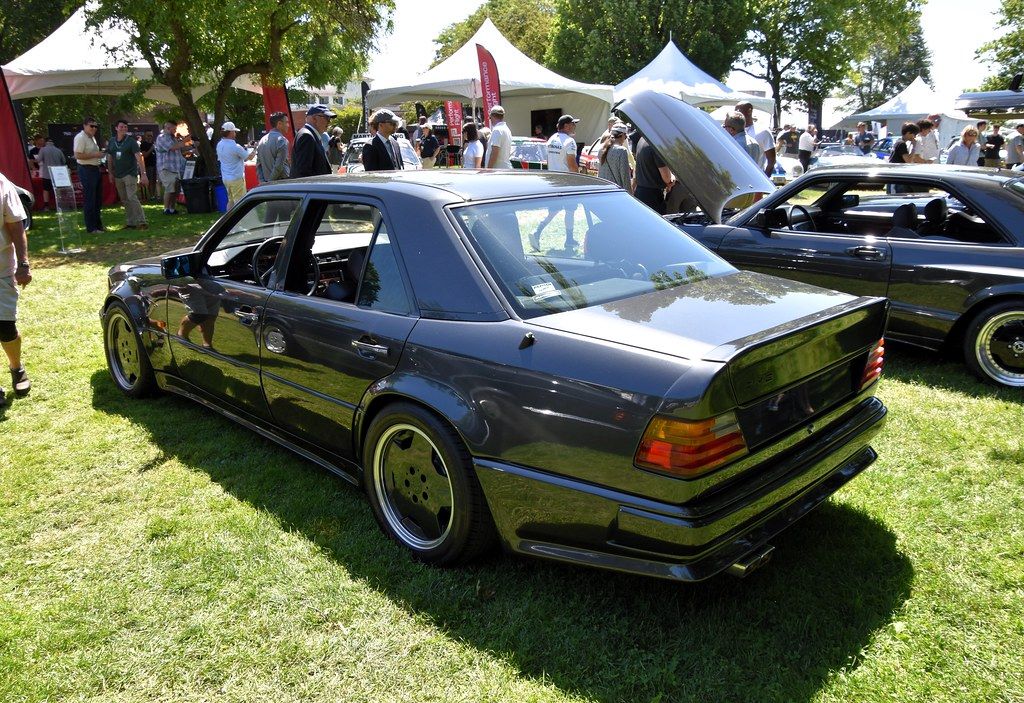
15. **Mercedes-Benz AMG Hammer**Following the acclaimed release of the 190E, Mercedes-Benz continued its new styling direction with the W124 300E. This model translated the now-familiar boxy design cues onto a larger platform, introducing a full-size sedan powered by its trusted inline six-cylinder engine. While the standard 300E offered ample sophistication and performance, Mercedes-Benz recognized that some might crave a significant injection of raw power and unbridled aggression.
AMG, which began as an endeavor by two passionate individuals dedicated to making Mercedes-Benz cars go faster, gradually evolved into a specialized manufacturer renowned for performance parts and engines. Their escalating success eventually led Mercedes-Benz to contract their expertise, tasking them with transforming the new 300E sedan into a high-performance variant that would be officially sold and supported through Mercedes dealerships. The extraordinary result of this collaboration was the legendary AMG Hammer.
Road & Track vividly describes the Hammer as a 300E meticulously fitted with an AMG 6.0-liter quad-cam V8 engine, unleashing more than 375 horsepower. This colossal power propelled the Hammer from 0 to 60 mph in a breathtaking 5.3 seconds—an exceptionally impressive figure for the late 1980s. In addition to its potent powerplant, these special cars received subtle yet impactful cosmetic upgrades and bespoke interior touches, including a distinctive AMG steering wheel and enhanced seats with superior bolstering. The Hammer could just as aptly have been named the Rocket, for it undeniably represented the cutting edge in high-performance German engineering, and it continues to be a highly sought-after special edition car today, with recent examples fetching a substantial sum at Sotheby’s. Its status as an untamed beast and a technological marvel is undeniably cemented.
Car Model Information: 2024 Genesis GV70 2.5T AWD
Name: Mercedes-AMG GmbH
Logo: File:AMG logo.svg
Type: Subsidiary
Fate: DaimlerChrysler
Foundation: Burgstetten
Founders: Hans Werner Aufrecht,Erhard Melcher
LocationCity: Affalterbach
LocationCountry: Germany
AreaServed: Worldwide
KeyPeople: Philipp Schiemer (Chairman of the Board)
Industry: Automotive industry
Products: High performance automobiles
Services: Research and development
NumEmployees: ~2,900
Parent: Mercedes-Benz
Homepage: www.mercedes-amg.com
Categories: 1967 establishments in West Germany, 24 Hours of Le Mans teams, ADAC GT Masters teams, All articles with dead external links, All articles with vague or ambiguous time
Summary: Mercedes-AMG GmbH, commonly known as AMG (Aufrecht, Melcher, Großaspach), is the high-performance subsidiary of Mercedes-Benz AG. AMG independently hires engineers and contracts with manufacturers to customize Mercedes-Benz AMG vehicles. The company has its headquarters in Affalterbach, Baden-Württemberg, Germany.
AMG was originally an independent engineering firm specializing in performance improvements for Mercedes-Benz vehicles. DaimlerChrysler AG took a controlling interest in 1999, then became the sole owner of AMG in 2005. Mercedes-AMG GmbH is now a wholly owned subsidiary of Mercedes-Benz AG, which is in turn owned by the Mercedes-Benz Group.
AMG models typically have more aggressive looks, higher performance, better handling, better stability and more carbon fibre than their regular Mercedes-Benz counterparts. AMG models are typically the most expensive and highest-performing variant of each Mercedes-Benz class. AMG has also made special variants of some Mitsubishi and Honda models.
AMG variants are usually badged with two numerals, as opposed to regular Mercedes-Benz vehicles, which have three (e.g. “E 63” as opposed to “E 350”). The numerals do not always indicate engine size, but are rather a tribute to earlier heritage cars, such as the 300 SEL 6.3 litre. For example, newer-model AMG V8s such as the E 63 actually have 4.0L V8s.
The world’s first stand-alone Mercedes-AMG dealership, AMG Sydney, was opened in Sydney, Australia in 2018.
Get more information about: Mercedes-AMG
Buying a high-performing used car >>>
Brand: Mercedes-Benz Model: AMG Hammer
Price: $39,995 Mileage: 20,074 mi.
These 15 selections, spanning from the very first automobile to the pinnacle of modern luxury and performance, collectively illustrate the profound and enduring legacy of Mercedes-Benz. Each model, whether a groundbreaking innovator, an undisputed luxury flagship, or an untamed beast built for speed, embodies the brand’s unwavering commitment to solid engineering, exquisite design, and relentless pursuit of automotive excellence. They are not merely vehicles; they are milestones, each contributing a vital chapter to a story of unparalleled achievement, cementing Mercedes-Benz’s place as a true titan in the automotive world.

